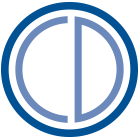It should be noted that all of the following procedures are still currently being researched. While there is evidence to suggest that they could potentially be helpful in reducing OCD symptoms, they are not concretely proven to do so. These should be utilized as a last resort when all of the evidence-based treatment methods for OCD have already been accessed. For more information on evidence-based treatment methods for OCD, please click here.
By Darin Dougherty, MD and Benjamin Greenberg MD, PhD
This article was initially published in the Summer 2009 edition of the OCD Newsletter.
While most patients with obsessive compulsive disorder (OCD) eventually respond to treatment with medication and/or behavioral therapy, a small minority do not improve following all conventional treatments. For this small minority, one of the few remaining options is neurosurgery, including lesion procedures (cingulotomy or capsulotomy) or deep brain stimulation (DBS). Cingulotomy involves drilling through the skull (called a craniotomy) and using a thermal (heated) probe to lesion an area within the anterior cingulate cortex of the brain.
Neuroimaging studies aimed at seeing what parts of the brain are involved in OCD have found that this area, the anterior cingulate cortex, is repeatedly involved (Deckersbacht al. 2006). Studies examining the outcome for patients following cingulotomy for treatment-resistant OCD have shown that almost one-half of patients who did not respond to conventional treatment achieve some benefit from the procedure (Doughertyt al 2002). Another neurosurgery procedure that has been used for treatment resistant OCD is called capsulotomy. This procedure is named after another structure in the brain the anterior limb of the internal capsule. Again, this procedure makes lesions (holes) in a part of this brain structure (technically this is an “ablative” or lesion procedure). Positive outcomes following an anterior capsulotomy for OCD are approximately 50-60% (Greenbergt al. 2003; Ruckt al. 2008). While the original capsulotomy procedure also involved a craniotomy, the use of the “gamma knife” has more recently allowed for capsulotomy procedures that do not require opening the skull. The gamma knife capsulotomy involves passing multiple gamma rays through the skull. No single gamma ray poses any danger to brain tissue. However, where the gamma rays intersect, the energy level is high enough to destroy (or ablate) the targeted tissue. The most recent version of this procedure is called gamma ventral capsulotomy in which the lesions are limited to the ventral (bottom) half of the anterior capsule. Responses to this procedure appear to be seen in about 60% of patients (Greenbergt al. 2003; Lopes, et al. in press 2009).
Another important development for treatment-resistant OCD is deep brain stimulation (DBS). DBS has been used since the mid-1980s to treat movement disorders such as severe tremor or Parkinson’s disease. DBS involves placing electrodes in targeted areas of the brain. In Parkinson’s disease electrical stimulation of the targeted brain region (such as the subthalamic nucleus) usually results in a significant decrease in some of the disabling symptoms of the illness, such as tremor. Once the electrodes are in place they are connected by wires under the skin to pulse generators under the skin (usually just below the collarbone). The pulse generator or “implantable neurostimulator” contains a battery for power and a microchip to regulate the stimulation. The treating physician uses a hand-held wand and small computer to communicate with the pulse generator through the skin. In doing, so the treating physician can determine how much electrical stimulation is delivered in which manner through the stimulating electrodes. These pulse generators are very similar to those implanted under the skin (also usually just below the collarbone) for patients with cardiac pacemakers. The treating physician even uses a similar device to communicate with the pulse generator through the skin. The biggest difference is that in DBS the electrodes are in the brain instead of in the heart (as is the case with cardiac pacemakers).
Given the encouraging response rates following capsulotomy for highly treatment refractory OCD, investigators decided to test DBS in this area of the brain and first implanted electrodes in the anterior capsule in patients with treatment-resistant OCD in the late 1990s (Nuttint al. 1999). The early results were promising, as three of these first four patients experienced benefit. Since then, larger scale trials have been conducted and the target site has moved slightly to an overlapping part of the brain called the ventral capsule/ventral striatum (VC/VS). A recent report by Greenberg (2008) describes the current world wide experience with DBS for OCD. For the 26 patients with treatment-resistant OCD described in the Greenberg manuscript, 61.5% were considered responders to DBS. This response rate is comparable to or slightly higher than the response rates for the other neurosurgical options described above (cingulotomy and capsulotomy), but comparisons must be tentative since the numbers of patients treated with DBS are still relatively small. In addition, while DBS does require opening the skull it does not require destroying any brain tissue. Lastly, DBS allows for a wider range of stimulation parameters (different amounts of electrical charge) than an ablative procedure.
Based on these results the FDA recently approved DBS for treatment-resistant OCD under a Humanitarian Device Exemption (HDE). The HDE approval assumes that a relatively small number of patients will receive the treatment. Because DBS for treatment-resistant OCD is a very specialized procedure, it is recommended that treatment be rendered at institutions that have experience with this intervention. Appropriate patient selection is vitally important. Typically, patients eligible for DBS will have had minimal or no response to all currently available medication and behavioral treatments for OCD. It is also critically important that a neurosurgeon with expertise in “Stereotactic and Functional Neurosurgery” perform the procedure. Of course, treatment begins after electrode placement. Determination of optimal stimulation parameters and longitudinal treatment are crucial. It is crucial that a psychiatrist with expertise in DBS be directly involved in a patient’s care over the months and years following surgery. At this point, it appears that DBS needs to continue indefinitely for continued benefit. One of the most interesting clinical observations after lesion procedures (capsulotomy or cingulotomy) or DBS, is that behavior therapy may become effective for a patient who was unable to improve with such treatment before surgery (Greenbergt al. 2006).
While the field of neurosurgery for treatment-resistant OCD has advanced considerably in recent years, further research is needed to both optimize DBS treatment and to better understand how DBS works (which areas of the brain are affected and how). Currently, four institutions are funded by the National Institutes of Health to conduct further studies of DBS for OCD. They are listed below. It is recommended that if a patient or treater is interested in learning more about these clinical trials that they contact one of these institutions. While these are exciting times for OCD treatment there is still much to be learned.
Primary Site
Butler Hospital/Brown University
Principal Investigator: Benjamin Greenberg, MD, PhD
Contact: Roberta Mcmahon, (401)-455-6594, roberta.mcmahon11@gmail.com
Other Sites
Massachusetts General Hospital
Principal Investigator: Darin D. Dougherty, MD
Contact: Rachel Franklin, Research Coordinator, (617) 643-4965, Rachel.Franklin@mgh.harvard.edu
Cleveland Clinic Foundation
Principal Investigator: Donald A. Malone, Jr, MD
Contact: Jenna Stump, (216) 444-2673, stumpj@ccf.org
University of Florida
Principal Investigator: Herb Ward, MD
Contact: Nikki Ricciuti, (352) 392-8316, nikkir@ufl.edu
Darin Dougherty, MD is Associate Professor of Psychiatry at Harvard Medical School, Clinical Associate at Massachusetts General Hospital (MGH), Interim Director of the MGH Psychiatric Neuroimaging Group, Director of the Neurotherapeutics Division in the Department of Psychiatry at MGH, Visiting Scientist at Massachusetts Institute of Technology and serves on the MGH Psychiatric Neurosurgery Committee and MGH General Clinical Research Center Advisory Committee. Dr. Dougherty is also an attending psychiatrist at the OCD Institute (OCDI) at McLean Hospital outside of Boston, MA and serves as Director of Medical Education at the OCDI.
Benjamin Greenberg, MD, PhD, is associate professor of psychiatry and human behavior at the Warren Alpert Medical School of Brown University. Dr. Greenberg is one of the world’s leading experts on OCD and the development of neuromodulation treatments (especially deep brain stimulation) for severe untreatable forms of OCD and depression.
References
- Deckersbach T., Dougherty DD, Rauch SL, “Functional neuroimaging of mood and anxiety disorders,” J. Neuroimaging, 2006; 16:1-10.
- Dougherty DD, Baer L, Cosgrove GR, Cassem EH, Price BH, Nierenberg AA, Jenike MA, Rauch SL, “Prospective long-term follow-up of 44 patients who received cingulotomy for treatment-refractory obsessive-compulsive disorder.” Am J Psychiatry, 2002; 159:269-275.
- Greenberg BD, Price LH, Rauch SL, Jenike M, Malone D, Friehs G, Noren G, Rasmussen SA, “Neurosurgery for Intractable Obsessive-Compulsive Disorder and Depression Critical Issues,” Neurosurgery Clinics of North America, 2003; 14(2) 199-212.
- Greenberg BD, Malone DA, Friehs GM, Rezai AR, Kubu CS, Malloy PF, Salloway SP, Okun MS, Goodman WK, Rasmussen SA, “Three-year outcomes in deep brain stimulation for highly resistant obsessive-compulsive disorder,” Neuropsychopharmacology, 2006; 31 2384–93.
- Greenberg BD, Gabriels LA, Malone DA, Jr, Rezai AR, Friehs GM, Okun MS, Shapira NA, Foote KD, Cosyns PR, Kubu CS, Malloy PF, Salloway SP, Giftakis JE, Rise MT, Machado AG, Baker KB, Stypulkowski PH, Goodman WK, Rasmussen SA, Nuttin BJ, “Deep brain stimulation of the ventral internal capsule/ventral striatum for obsessive-compulsive disorder worldwide experience,” Mol Psychiatry, 2008 May 20 [Epub ahead of print]
- Lopes A, Greenberg B, Norén G, Canteras M, Busatto G, Mathis M, et al, “Treatment of Resistant Obsessive-Compulsive Disorder with Ventral Capsular/Ventral Striatal Gamma Capsulotomy, A Pilot Prospective Study,” Journal of Neuropsychiatry and Clinical Neurosciences, 2009 in press.
- Nuttin B, Cosyns P, Demeulemeester H, Gybels J, Meyerson B, “Electrical stimulation in anterior limbs of internal capsules in patients with obsessive-compulsive disorder,” Lancet, 1999 Oct 30;354(9189):1526.
- Rück C, MD, Karlsson A, Steele JD, Edman G, Meyerson BA, Ericson K, Nyman H, Asberg M, Svanborg P, “Capsulotomy for obsessive-compulsive disorder. Long-term follow-up of 25 patients,” Arch Gen Psychiatry, 2008; 65(8):914-922.

